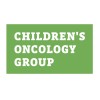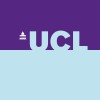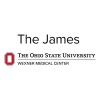
Bevacizumab + CHOP-Rituximab in Untreated Mantle Cell Lymphoma
Untreated Mantle Cell LymphomaPrimary Objective 1. To evaluate the safety profile of Bevacizumab (Bevacizumab™)- Rituximab (Rituxan®)-CHOP (RA-CHOP) in patients with newly diagnosed mantle cell lymphoma (MCL). Secondary Objectives To evaluate the response rate and time to disease progression of the RA-CHOP regimen in patients with newly diagnosed MCL. To prospectively characterize the angiogenic profiles of MCL patients during RA-CHOP treatment.

Combination Chemotherapy Followed by Radiation Therapy in Treating Young Patients With Newly Diagnosed...
Childhood Favorable Prognosis Hodgkin LymphomaChildhood Lymphocyte Depletion Hodgkin Lymphoma4 moreThis phase III trial is studying how well combination chemotherapy works when given before radiation therapy and/or additional chemotherapy in treating young patients with newly diagnosed Hodgkin's lymphoma. Drugs used in chemotherapy work in different ways to stop the growth of cancer cells, either by killing the cells or by stopping them from dividing. Radiation therapy uses high-energy x-rays to kill cancer cells. Giving more than one drug (combination chemotherapy) and giving them together with radiation therapy may kill more cancer cells.

Low-Dose Radiation Therapy in Treating Patients With Follicular or Marginal Zone Non-Hodgkin's Lymphoma...
LymphomaRATIONALE: Radiation therapy uses high-energy x-rays to kill cancer cells. It is not yet known which regimen of low-dose radiation therapy is more effective in treating follicular non-Hodgkin's lymphoma. PURPOSE: This randomized phase III trial is studying two different regimens of low-dose radiation therapy (24Gy versus 4Gy) to compare how well they work in treating patients with follicular or marginal zone non-Hodgkin's lymphoma.

CCI-779 in Treating Patients With Recurrent or Refractory B-Cell Non-Hodgkin's Lymphoma or Chronic...
B-cell Chronic Lymphocytic LeukemiaExtranodal Marginal Zone B-cell Lymphoma of Mucosa-associated Lymphoid Tissue16 moreDrugs used in chemotherapy, such as CCI-779, work in different ways to stop cancer cells from dividing so they stop growing or die. This phase II trial is studying how well CCI-779 works in treating patients with recurrent or refractory B-cell non-Hodgkin's lymphoma or chronic lymphocytic leukemia.

Rituximab and Combination Chemotherapy in Treating Older Patients With Previously Untreated B-Cell...
LymphomaRATIONALE: Monoclonal antibodies, such as rituximab, can block cancer growth in different ways. Some find cancer cells and kill them or carry cancer-killing substances to them. Others interfere with the ability of cancer cells to grow and spread. Drugs used in chemotherapy, such as cyclophosphamide, doxorubicin, vincristine, and prednisone, work in different ways to stop the growth of cancer cells, either by killing the cells or by stopping them from dividing. Giving rituximab together with combination chemotherapy may kill more cancer cells. PURPOSE: This phase II trial is studying how well giving rituximab together with combination chemotherapy works in treating older patients with previously untreated B-cell lymphoma.

Treatment of Mantle Cell Lymphoma at Diagnosis for Patients Under 65 Years
Mantle Cell LymphomaPhase II study to test in first line the VAD (Vincristine Adriablastine Dexamethasone) + C (Chlorambucil ) regimen associated to rituximab ( R-VAD + C ) in a cohort of young patients under 66 years with a mantle cell lymphoma and also the test the role of an in vivo marrow purge with rituximab before an autologous stem cell transplantation for the consolidation of the patients which fulfilled a response to 4 cycles of (R VAD + C) regimen.

CHOP and Campath-1H in Previously Untreated Aggressive T/NK-Cell Lymphomas
Non-Hodgkin's LymphomaPurpose: This study will evaluate the safety of CHOP plus Alemtuzumab in patients with T/NK cell lymphomas and CD-20 negative large B-cell lymphomas who have not had previous treatments. The biological response of lymphoma cells and the immune system to this drug combination will also be measured in patients before, during, and after therapy administration.

CDDO to Treat Solid Tumors and Lymphomas
Solid TumorsLymphomaBackground: CDDO is a novel synthetic triterpenoid which is a potent multifunctional molecule. It induces apoptosis in vitro in malignant cells through both intrinsic and extrinsic pathways, and it controls cellular differentiation, apoptosis, and growth inhibition by serving as a ligand for the transcription factor peroxisome proliferator activator receptor-gamma (PPAR gamma). Based on in vitro activity, it holds considerable promise as a novel anti-tumor agent against a wide range of malignancies by concurrently targeting multiple pathways leading to oncogenesis. In vivo data demonstrates that the drug is well tolerated in dogs, and has anti-tumor effects, dependent upon dose schedule. Objectives: Primary: To determine the dose limiting toxicities, toxicity profile, and maximum tolerated dose of CDDO when administered in adult patients with solid tumors and lymphomas. To characterize the pharmacokinetics of CDDO. Secondary: To obtain preliminary evidence of anti-tumor activity of CDDO in this population. To evaluate the in vivo molecular and biological effects of CDDO by assessing changes in biomarkers of apoptosis and cell cycle arrest. Eligibility: Patients with advance, histological-confirmed malignancies refractory to standard therapy or for which no standard therapy exist. Patients should have adequate liver, renal and bone marrow function. Study Design: Accordingly with the accelerated titration design 4B, dose levels will initially be increased at 100% increments, and one new patient per dose level will be treated per 4-week course. The accelerated phase ends when one patient experiences DLT during any course of treatment or when two different patients experience grade 2 toxicity during first course of treatment. When the first instance of grade 2 toxicity is observed two additional patients must have been treated at that dose, or a higher dose, (during any course) without experiencing moderate or worse toxicity, in order that the accelerated phase continue. When the accelerated phase ends, dose-escalation will revert to a more conservative modified Fibonacci scheme with 40% dose-step increments, with at least 3 patients treated per dose level.

Mobilization of Stem Cells With Plerixafor, Chemotherapy and G-CSF in Multiple Myeloma or Non-Hodgkin's...
LymphomaNon-Hodgkin1 morePatients with multiple myeloma (MM) and non-Hodgkin's lymphoma (NHL) will be mobilized with chemotherapy and G-CSF plus plerixafor (AMD3100). The purpose of this protocol is to determine if plerixafor given after chemotherapy and G-CSF mobilization regimen is safe, if it can increase the circulating levels of peripheral blood stem cells (PBSCs) by ≥ 2-fold before apheresis, and if transplantation with the apheresis product was successful, as measured by time to engraftment of polymorphonuclear leukocytes (PMNs) and platelets (PLTs).

Bortezomib and Gemcitabine in Treating Patients With Relapsed Mantle Cell Lymphoma
LymphomaRATIONALE: Bortezomib may stop the growth of cancer cells by blocking some of the enzymes needed for cell growth and by blocking blood flow to the cancer. Drugs used in chemotherapy, such as gemcitabine, work in different ways to stop the growth of cancer cells, either by killing the cells or by stopping them from dividing. Bortezomib may help gemcitabine work better by making cancer cells more sensitive to the drug. PURPOSE: This phase II trial is studying how well giving bortezomib together with gemcitabine works in treating patients with relapsed mantle cell lymphoma.
